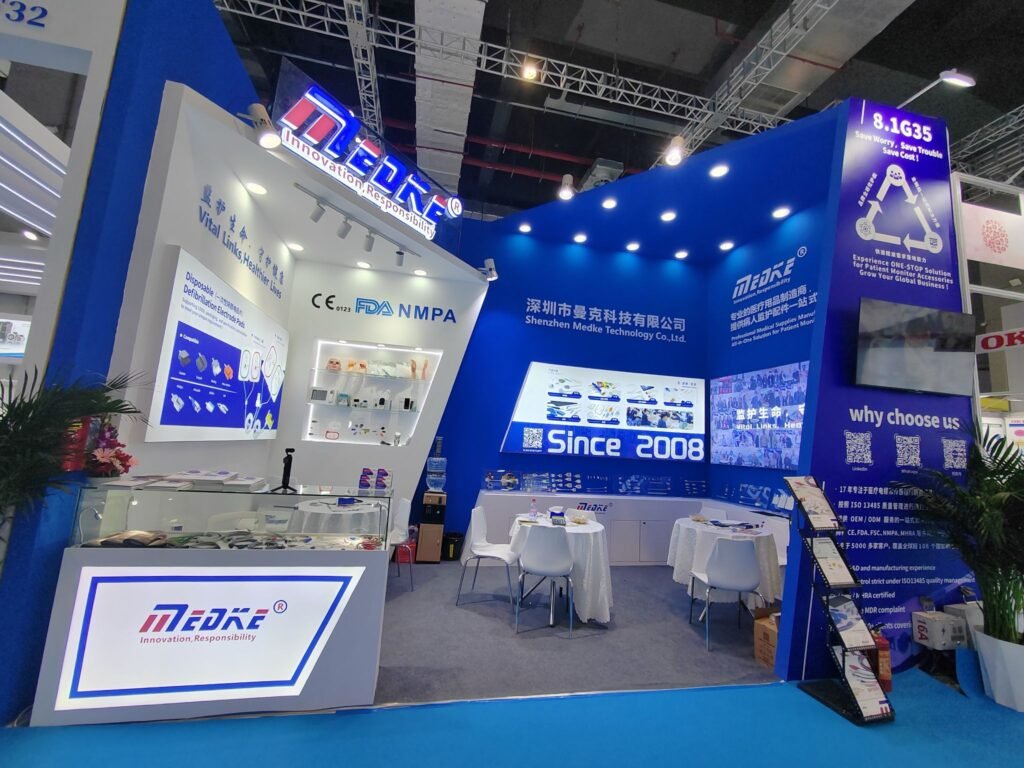Exploring Australia’s Medical Monitoring Accessories Market: Opportunities, Trends, and Competition
As the demand for healthcare services continues to grow, Australia’s market for patient monitoring accessories has entered a new phase of development. In this report, we dive into the evolving landscape of this niche sector—highlighting growth trends, product segments, procurement behavior, and the competitive dynamics that are shaping the future.
1. Market Overview
Over the past five years, the Australian patient monitoring accessories market has experienced steady expansion. In 2020, the market size reached approximately USD 171 million, driven largely by the rise of elderly care, increased ICU capacity during COVID-19, and the broader adoption of remote health monitoring.
By 2027, the market is projected to more than double to USD 341.2 million, growing at a CAGR of 10.4%—outpacing the global average of 8.9%. Hospitals and clinics remain the core customer base, though at-home care is gaining ground.
Factors fueling growth include:
-
Higher demand for disposable, infection-control-compliant accessories.
-
Increased replacement rates for reusable components.
-
Greater overall investment in medical equipment.
2. Key Product Segments
2.1 SpO2 Sensors: The Dominant Segment
SpO2 sensors accounted for 53.2% of total market revenue in 2020—roughly USD 91 million. Their widespread use across ICUs, ORs, and general wards has made them indispensable.
During the pandemic, demand surged due to increased reliance on respiratory monitoring. In 2023, the market value for SpO2 sensors was AUD 73.5 million (around 35% of the total accessory market), and it’s expected to keep growing at a near-double-digit pace.
Technical innovations—such as enhanced LED technology and cross-brand compatibility—have been central to market development. Products that can interface with Philips, Masimo, and Mindray monitors are especially popular.
2.2 ECG Cables and Lead Wires: A Steady Contributor
ECG cables trail SpO2 sensors in market share but remain vital. Estimated to represent 10–15% of the market, ECG cables are durable components typically replaced when worn or damaged.
Hospitals prefer high-quality, kink-resistant, and radiolucent ECG cables—especially in departments like radiology or ICU. Although the replacement rate is lower, the growing number of installed monitors ensures a consistent demand.
By 2027, this segment is expected to grow at a CAGR of 6–7%, maintaining its importance despite a slight decline in market share due to the rise of newer sensor types.
3. Competitive Landscape: Spotlight on Axon Healthcare Pty Ltd
3.1 Company Positioning
Founded in 2016, Axon Healthcare has grown into a top-tier local supplier specializing in compatible accessories for mainstream brands like Philips, Masimo, GE, Mindray, and Nellcor. They offer a full suite of both disposable and reusable accessories.
3.2 Import & Supply Chain Strategy
Axon imports 90% of its products from OEM manufacturers in China and Southeast Asia. With exclusive distribution rights from some overseas partners, Axon delivers competitive pricing and reliable inventory to hospitals and distributors across Australia.
3.3 Business Coverage
Axon services not only the Australian market but also New Zealand and parts of the South Pacific. All products are registered with Australia’s TGA and comply with CE standards. They provide local warehousing, on-site technical support, and fast fulfillment services.
3.4 Competitive Advantages
-
One-Stop Product Line: Hospitals can source accessories for multiple devices from a single supplier.
-
Cost Efficiency: Through bulk import and exclusivity deals, Axon offers more affordable alternatives to OEM parts.
-
Certified Quality: TGA-registered products with OEM-level performance, supported by 12-month warranties.
-
Local Service: Rapid-response technical support and a widespread service network enhance customer satisfaction.
Axon is recognized as a top-tier vendor, second only to original equipment manufacturers (OEMs) in market coverage and brand trust.
4. Purchasing Behavior of Local Hospitals and Distributors
Australian hospitals and distributors display several consistent preferences:
4.1 Quality & Brand Preference
Public hospitals prioritize OEM accessories or certified compatible products to ensure device compatibility and patient safety. Smaller clinics are more open to cost-effective third-party alternatives if quality is assured.
4.2 Procurement Frequency
Hospitals use a mix of scheduled bulk orders (e.g., quarterly for disposable sensors) and reactive replenishment. ECG cables are usually replaced based on maintenance schedules or wear assessments.
4.3 Price Sensitivity
Budget constraints—especially in the public sector—make price a key consideration. Third-party products that match OEM performance at lower prices, like those from Axon, often win contracts.
4.4 Supplier Channels
Hospitals source either from OEMs or trusted third-party suppliers. While OEMs dominate early-stage procurement (especially during warranty), third-party suppliers like Axon become essential for cost control post-warranty.
4.5 Accessory Preferences by Department
-
ICUs & ORs: Prefer disposable sensors to prevent cross-infection.
-
General Wards: Use reusable sensors for cost efficiency.
-
Distributors often tailor product recommendations by department needs.
4.6 Service Expectations
Beyond products, hospitals value service—timely delivery, on-site trials, and technical consultations. Local vendors offering fast, responsive support, like Axon, are favored over large multinational distributors lacking specialized services.
5. Conclusion
Australia’s patient monitoring accessory market has undergone rapid development—growing from under USD 150 million to over USD 200 million within five years. SpO2 sensors continue to lead the way, while ECG cables maintain stable demand.
Local players like Axon Healthcare have leveraged import networks, competitive pricing, and localized service to solidify their position. For hospitals, key purchasing criteria include quality, cost-efficiency, service responsiveness, and certification compliance.
Looking ahead, the rising standards for clinical accuracy and infection control will continue to drive innovation and growth in the sector. Australia’s market for medical monitoring accessories is poised for continued prosperity.
11.png)


